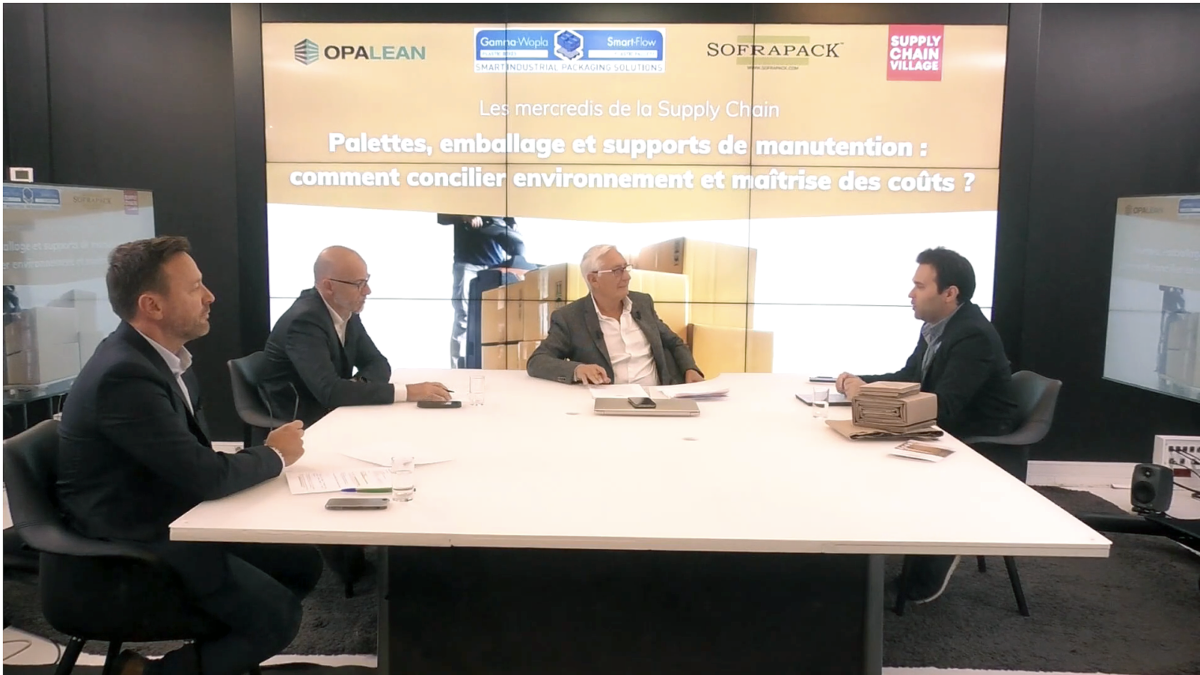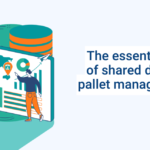Pallet and packaging: How to reconcile environment and cost control?
Pallet and packaging: How to reconcile environment and cost control?
For several months, unprecedented tensions have been shaking the wood pallet market. A context in which companies have to face the shortage, the increase of costs, and meet environmental requirements.
It’s on the occasion of the Round Table, organized by Supply Chain Village, that Opalean intervened on these problems, as well as the economic and environmental stakes related to packaging. This debate allowed to highlight the different solutions available to companies in order to reconcile ROI and CSR.
1. What types of media according to the needs?
When it comes to transport, wooden or plastic pallets and other equipment are still essential for moving goods. Each handling media has its benefits and disadvantages in terms of safety, budget, warehouse automation and circular economy… The question of choice then arises: which media to choose while consider the needs of companies?
EPAL pallets have the benefit of being made from wood from sustainably managed forests, in compliance with environmental standards. Moreover, with a well-controlled flow management, combining reuse and repair, they are one of the pillars of the circular economy scheme.
Plastic pallets are lighter and more robust, and have a longer service life than wooden pallets (up to 50 rotations against 30 for EPAL pallets). On the other hand, they don’t meet the standards of automated warehouses and the question arises as to their manufacture, since they require a significant amount of energy and are derived from oil.
Perfectly adapted to custom sizes, cardboard pallets and packaging are undeniably the lightest on the market: a major benefit for international air freight. However, even though paperboard has a low carbon footprint, the packaging is usually destroyed after a single use.
Whatever the type of handling medium chosen, it is essential to accurately track its flows to optimize its lifespan, increase its number of rotations and make its cost of use profitable.
2. Controlling flows to reduce costs
Companies underestimate the importance of managing their equipment!
Usually, pallet flows and their associated reverse are managed in silos¹, via a multitude of Excel files. With this mode of operation:
“a shipper loses on average between 10% and 15% of these media, a loss rate that can reach up to 30% in some cases”
says Thierry Sustar. If we take the example of a manufacturer who ships 1 million pallets per year as part of its activities, this represents 20 million euros of outstanding amounts linked to this asset.
It is undeniable that the question of price and availability have a huge impact on companies, which are looking to re-use their media as much as possible and extend their use. In this context, digital solutions, such as Opalean, bring a concrete answer because they allow to put under control the management of flows.
Indeed, Opalean is a collaborative platform that optimizes pallet tracking within the supply chain, reconciling physical flows with IT flows. Interfaced with the various management systems (TMS or WMS), it facilitates coordination between all partners, whether they are shippers, transporters or logistics providers. Real-time data management reduces the time spent by operators and halves the need for new pallets. On average, Opalean can recover up to 20% of additional pallets compared to traditional silo management.
While cost control and the cost-effectiveness of media remain decisive factors, environmental issues are taking the lead in packaging purchasing decisions.
Would you like to know the savings to be made on your pallet pool?
👉 In a few clicks, estimate the R.O.I of the digitalization of your pallet pool!
3. A new objective: combining ROI and CSR
Under the pressure from the legal framework and consumers, manufacturers are becoming aware of the new environmental issues, and are being encouraged to reconsider their uses towards a more virtuous management method.
This is the case of the anti-waste law for a circular economy, known as the Agec² law, which plans to reduce single-use plastic packaging. By 2025, any manufacturer that has not implemented a circular economy for the management of its packaging will be subject to an eco-contribution. In this context, the tracking of flows takes on its full meaning because although manufacturers are able to recycle pallets and other plastic supports, their loss rate is still high.
The collaborative management mode proposed by Opalean allows to reduce the loss of packaging. Thanks to the supervision tools, the shipper identifies the retention areas and the available stocks of supports. He is therefore able to mobilize his own equipment to better reuse them. The platform guarantees the quality of the data shared, in real time, and a control of the circular economy loop. This solution can be adapted to wooden or plastic pallets and also to all types of equipment, since the platform currently manages more than 80 different packaging references.
In conclusion, whatever the media used, the rule remains the same: “Reduce, Reuse and Recycle”, with the imperative to control the data. Companies that adapt to these new uses will be able to save money, green their logistics and meet the new demands of consumers.
Today, Opalean is recognized on the market for meeting both economic and environmental challenges. The solution has been certified by Solar Impulse, which certifies environmentally friendly and financially profitable technologies.
👉Contact our expert thierry.sustar@opalean.com, to learn more!
- silo: management mode in which each has its own data, which it compares with that of its exchange partner.
- The AGEC Act: calls for a 20% reduction in plastic packaging, at least half of which must be achieved through reuse; and encourages 100% recycling of all plastic packaging by 2025.
👉Want to know more about it?








